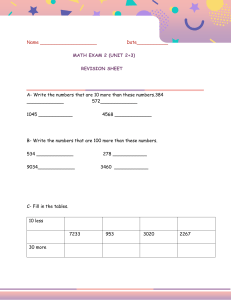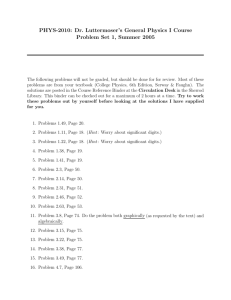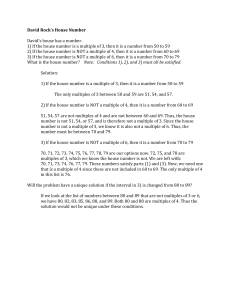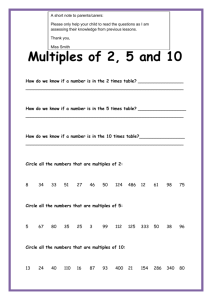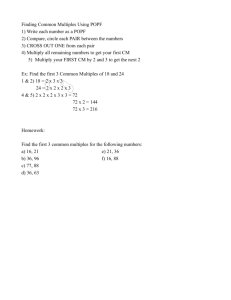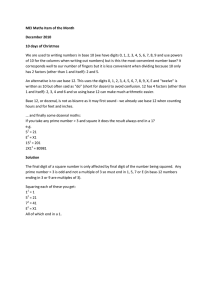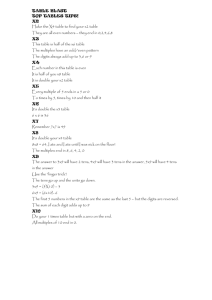Engr 123 January 25, 2016 Loop Worksheet
advertisement
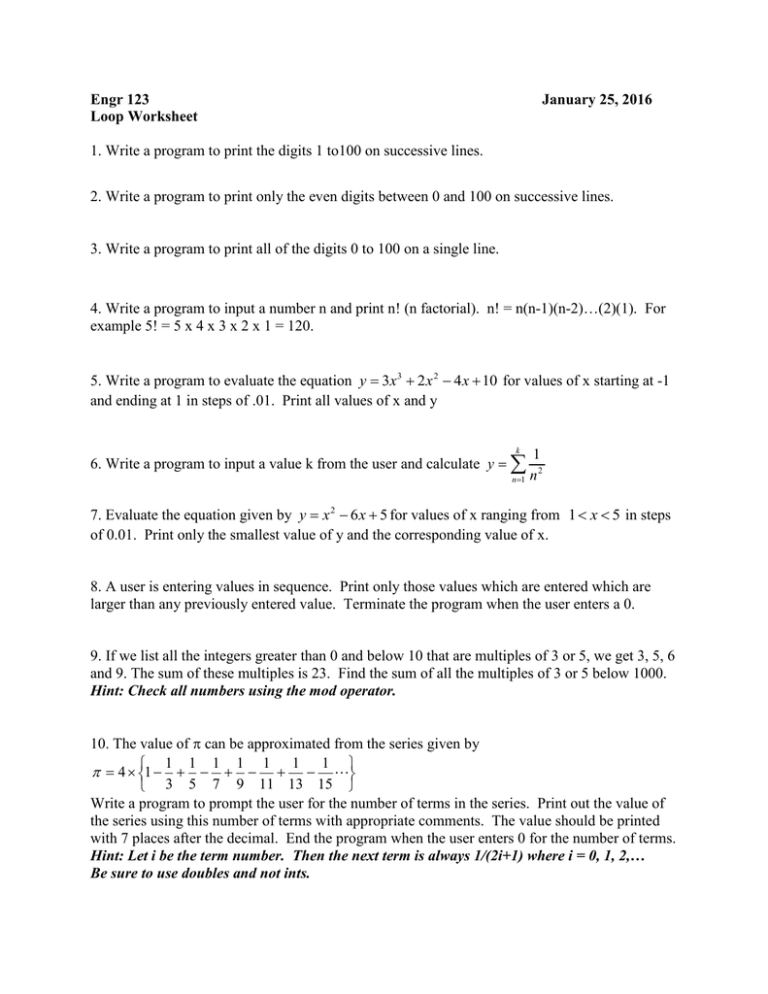
Engr 123 Loop Worksheet January 25, 2016 1. Write a program to print the digits 1 to100 on successive lines. 2. Write a program to print only the even digits between 0 and 100 on successive lines. 3. Write a program to print all of the digits 0 to 100 on a single line. 4. Write a program to input a number n and print n! (n factorial). n! = n(n-1)(n-2)…(2)(1). For example 5! = 5 x 4 x 3 x 2 x 1 = 120. 5. Write a program to evaluate the equation y 3x 3 2 x 2 4 x 10 for values of x starting at -1 and ending at 1 in steps of .01. Print all values of x and y k 6. Write a program to input a value k from the user and calculate y n 1 1 n2 7. Evaluate the equation given by y x 2 6 x 5 for values of x ranging from 1 x 5 in steps of 0.01. Print only the smallest value of y and the corresponding value of x. 8. A user is entering values in sequence. Print only those values which are entered which are larger than any previously entered value. Terminate the program when the user enters a 0. 9. If we list all the integers greater than 0 and below 10 that are multiples of 3 or 5, we get 3, 5, 6 and 9. The sum of these multiples is 23. Find the sum of all the multiples of 3 or 5 below 1000. Hint: Check all numbers using the mod operator. 10. The value of can be approximated from the series given by 1 1 1 1 1 1 1 4 1 3 5 7 9 11 13 15 Write a program to prompt the user for the number of terms in the series. Print out the value of the series using this number of terms with appropriate comments. The value should be printed with 7 places after the decimal. End the program when the user enters 0 for the number of terms. Hint: Let i be the term number. Then the next term is always 1/(2i+1) where i = 0, 1, 2,… Be sure to use doubles and not ints.
